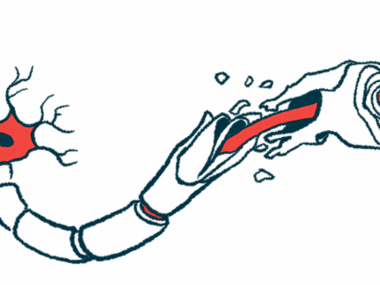New method shines light on nerve fibers in the brain
Cost-effective tool can map neuronal pathways in neurological disease
Written by |

A new technique is letting scientists peer into the brain’s wiring with greater detail by simply using a microscope and an LED light, an accessible and cost-effective method that may be useful for studying brain damage in neurological diseases such as multiple sclerosis (MS).
The method, called Computational Scattered Light Imaging (ComSLI), generates precise maps of nerve fiber direction in tissue samples, even those stored for years, and is easily adoptable by labs around the world.
The research was published in Nature Communications in a study titled “Micron-resolution fiber mapping in histology independent of sample preparation.”
Nerves contain long, wire-like structures called nerve fibers or axons. Within the brain, axons are woven together in densely connected structures, with individual nerve fibers extending in different directions to form connections between various brain regions.
Using ComSLI to map nerve fiber direction
Knowing in which directions nerve fibers run, and how those fibers change in certain neurodegenerative conditions, is essential to better understanding brain biology. However, because these fibers are microscopic, it can be difficult to image them accurately.
ComSLI uses a simple LED light source and a microscope camera to determine the direction of fibers in tissue samples. The technique takes advantage of the fact that light scatters differently depending on the orientation of microscopic structures it passes through. By moving the light around and measuring how the scattering changes, the technique can make deductions about fiber direction.
“This fast, simple-to-implement, and cost-effective technique can become a routine tool to provide … fiber orientation mapping of [tissue sample] sections, opening new avenues in the investigation of the microarchitecture of tissues in health and disease,” the scientists wrote.
The researchers first demonstrated the technique can help visualize fiber orientation with microscopic resolution, generating detailed orientation maps across full brain sections by scanning each slice under LED illumination from multiple angles.
Then they showed that the technique can be applied to tissue samples prepared using a wide range of standard laboratory methods, including those that have been stored for years. And because the needed equipment is fairly basic, they are hopeful that many other scientists will be able to adopt this technique.
“This is a tool that any lab can use,” Michael Zeineh, MD, PhD, co-author of the study at Stanford University, said in a university news story. “You don’t need specialized preparation or expensive equipment. What excites me most is that this approach opens the door for anyone, from small research labs to pathology labs, to uncover new insights from slides they already have.”
The scientists also conducted proof-of-concept tests that showed how ComSLI could be used in different diseases, including MS.
In MS, inflammation in the brain damages the myelin sheath, a fatty wrapping around nerve fibers that helps them send electrical signals. The researchers used ComSLI to analyze brain tissue from an MS patient, showing that the method could accurately identify the direction of nerve fibers even when myelin was damaged.
You don’t need specialized preparation or expensive equipment. What excites me most is that this approach opens the door for anyone, from small research labs to pathology labs, to uncover new insights from slides they already have.
ComSLI differentiates MS damage and reveals wider potential
ComSLI could also differentiate between areas where myelin was damaged and areas where the fibers themselves were damaged.
“By studying samples with diseases such as multiple sclerosis … we show that ComSLI, being robust to [myelin loss], can detect disturbed [nerve fiber structure] changes in lesions, and can also discern myelin from axonal loss, helping to differentiate lesion areas,” the researchers wrote.
The scientists also demonstrated that ComSLI can be used to detect fiber-like structures in tissues beyond the brain, such as muscle fibers. They hope this technique will help accelerate studies in various fields, and said other scientists are already expressing interest.
“The information about tissue structures has always been there, hidden in plain sight. ComSLI simply gives us a way to see that information and map it out,” said Marios Georgiadis, PhD, study lead author at Stanford.
“Although we just presented the method, there are already multiple requests for scanning samples and replicating the ComSLI setup — so many labs and clinics would like to have micron-resolution fiber orientation and micro-connectivity on their histology sections,” Georgiadis added. “Another exciting plan is to go back to well-characterized brain archives or brain sections of famous people, and recover this micro-connectivity information, revealing ‘secrets’ that have been considered long lost. This is the beauty of ComSLI.”






